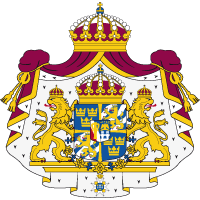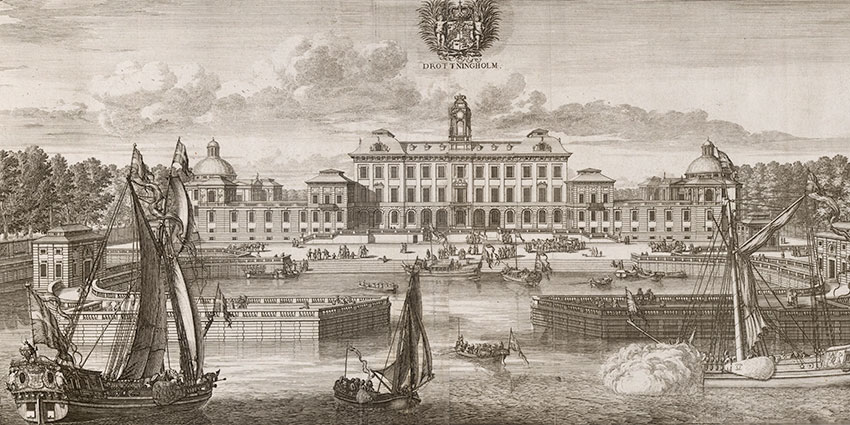
Drottningholm Palace: A history
For more than 400 years, Drottningholm Palace has been a place for recreation and cultural encounters. Queen Dowager Hedvig Eleonora, Queen Lovisa Ulrika and King Gustav III have all left their mark on the palace and its surroundings. Today, it is the permanent home of King Carl XVI Gustaf and Queen Silvia.
The name Drottningholm dates back to the building that King Johan III had built in the late 16th century for his consort, Queen Katarina Jagellonika. This turreted two-storey building, which was designed by King Johan III's architect Willem Boy, was still standing when Queen Dowager Hedvig Eleonora bought the property from Magnus Gabriel de la Gardie in 1661, but it was destroyed by a fire later that same year. Architect Nicodemus Tessin the Elder was then commissioned to build a new palace that would be worthy of Sweden's position as one of Europe's mightiest nations at the time.
Under Tessin's leadership, a magnificent building was constructed featuring interiors that are among Sweden's finest early Baroque examples.
Architectural highlights
One of the highlights is Hedvig Eleonora's State Bedchamber, created by some of the country's leading artists and craftsmen, and the monumental staircase – which features beautiful marbling, perspective paintings and marble sculptures that bring the staircase to life with their glances and gestures – was a source of great pride to the architect. Tessin the Elder died in 1682, and the task of completing the construction of the palace was passed on to his son, Nicodemus Tessin the Younger. He completed his father’s work, for instance Karl XI's Gallery, with its paintings depicting battles from King Karl XI's Scanian War.
The palace's golden age
Drottningholm was given to Princess Lovisa Ulrika of Prussia as a wedding gift when she married the heir to the Swedish throne, Prince Adolf Fredrik, in 1744. Lovisa Ulrika's time at Drottningholm was a new golden age for the palace. She was passionate about culture, and surrounded herself with poets, artists, scientists and writers. They held discussions, worked in the grounds and played music together.
The library, with its even pace and form, its classically gilded columns and its playful Rococo ornamentation, dates from this time and is regarded as one of Sweden's most beautiful rooms.
The architect, Jean-Eric Rehn, was assisted by the leading craftsmen, and their exquisite skill is clear to see. Here, we can imagine the queen speaking with the writers Hedvig Charlotta Nordenflycht and Olof von Dahlin, whose work she greatly admired. Scientific researchers also met and discussed their work at Drottningholm. Under the guidance of Carl Linnaeus, scientists gathered at Drottningholm to organise the queen's collection of natural artefacts, and named molluscs, created systems and arranged classifications.
King Gustav III's Drottningholm
In 1777, the Swedish State bought back Drottningholm and King Gustav III came to live at the palace. Changes were made to the interiors again, including the creation of the spectacular Chinese Salon with its beautiful tiled stove and contemporary furnishings created by Sweden's leading furniture makers, such as Georg Haupt and Johan Christian Linning.
Even as a child, Gustav enjoyed spending time at Drottningholm. In August 1754, he told his parents:
"Yesterday afternoon I ran along the gallery with my brothers. Then I asked Chief Physician Linnaeus to tell me about animals. He told me about mosquitoes, about birds that eat them, and about swans, pelicans and sea lions."
A few days later, he was in his mother's treasury, where he saw Roman medals "which amused me very much". He also liked spending time in the library, reading the French-language books. In pleasant weather, they walked through the park to the Chinese Pavilion in the mornings. Gustav found it boring, and described it as walking through "the stony sand of Arabia".
"Fair weather and foul"
Drottningholm was a summer palace that offered a contrast to daily life at the palace in Stockholm. However, life here was still filled with rules, as King Gustav III's sister-in-law, Hedvig Elisabeth Charlotta, explained: "Our life here is quite peculiar. It is a combination of town life and country living, unlike anything else, a union of courtly pleasure and rural pastimes, of etiquette and freedom, of merriment and retirement, which makes everything barely agreeable. A special set of rules has been drawn up for staying at Drottningholm, and everyone has a copy in their room. It contains various regulations for fair weather and foul. If the weather is fair, we eat dinner and spend the whole day at the Chinese Pavilion. If not, we stay at the palace. If we are at the Chinese Pavilion, we should dress simply, with the gentlemen in evening dress or military uniform, for those who have one. If the weather is foul, both ladies and gentlemen wear what they would in Stockholm."
It was King Gustav III himself who decided whether the weather was fair or foul. Every morning, he placed a playing card on the door to his audience chamber. If it was hearts, this meant that the weather was fair and they would go to the Chinese Pavilion. If it was spades, this meant that the weather was bad and they would stay at the palace. Hedvig Elisabeth Charlotta complained that the king often changed his mind:
"It sometimes happens that the card is changed two or three times over the course of the morning, which causes great inconvenience."
A dramatic end to an era
With the death of King Gustav III in 1792, Drottningholm lost a little of its sparkle. The palace passed to his son, King Gustav IV Adolf, and Queen Fredrika. Parties and tournaments were still held, but without their previous frivolity. It was also at Drottningholm that the Gustavian era came to a dramatic end. Following the coup d'état of April 1809, the deposed King Gustav IV Adolf was taken first to Drottningholm and then to Gripsholm, before subsequently being exiled.
New life at Drottningholm
Drottningholm also became an important place for the Bernadotte dynasty, and during the time of King Oskar I and Queen Josefina the rooms were given great symbolic value, such as the Hall of State. King Oskar II, King Gustaf V and King Gustaf VI Adolf also spent long periods at Drottningholm and left their marks on the interiors of the palace, but it was only with King Carl XVI Gustaf and Queen Silvia that the palace became a permanent royal residence.
Copperplate engraving of Drottningholm Palace by the draftsman Erik Dahlbergh, from the folio Suecia antiqua et hodierna. Photo: The Royal Library
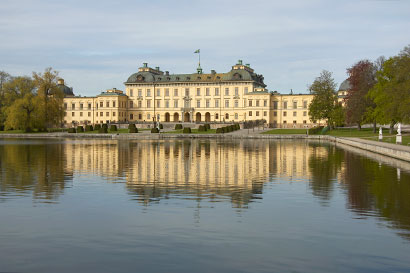
Drottningholm Palace stands on the waters of Lake Mälaren. Today, the palace is the permanent home of King Carl XVI Gustaf and Queen Silvia. Photo: Alexis Daflos
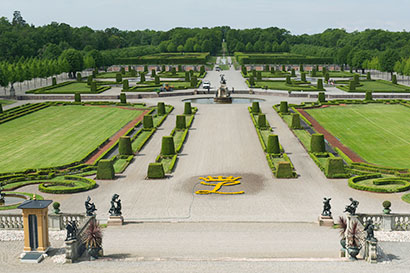
Arranging Drottningholm Palace Park for the christening of Princess Leonore on 8 June 2014. Photo: Alexis Daflos
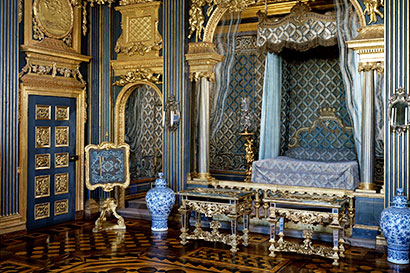
Queen Hedvig Eleonora's charming State Bedchamber is one of the highlights of Drottningholm Palace. Photo: Alexis Daflos
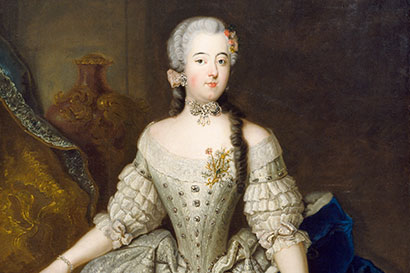
Portrait of Queen Lovisa Ulrika. Drottningholm Palace was a wedding present to Princess Lovisa Ulrika from her consort, Adolf Fredrik, in 1744. Photo: The National Museum
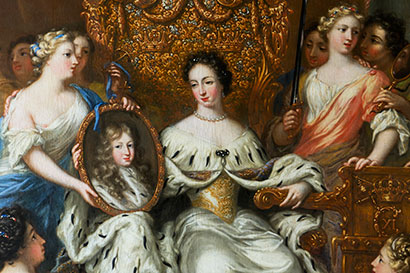
Portrait of Queen Hedvig Eleonora surrounded by allegorical figures, such as love, hope and sincerity. To the left of the queen is a portrait of her five-year-old son, King Karl XI. Photo: Alexis Daflos
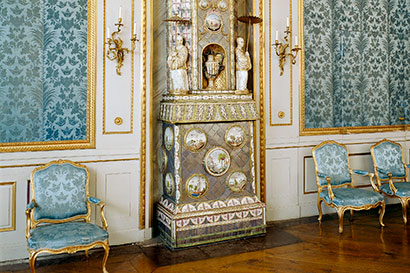
The Chinese Salon with its tiled stove dates from King Gustav III's time at the palace. He spent a great deal of time at Drottningholm Palace as a child. Photo: Alexis Daflos
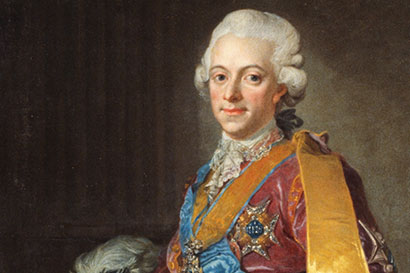
King Gustav III moved in to Drottningholm Palace in 1777, but enjoyed spending time here even as a child. Photo: The National Museum
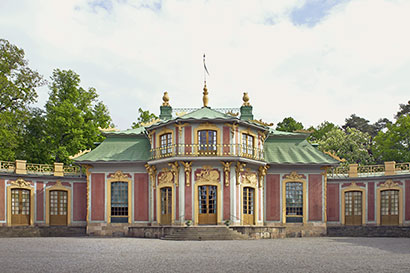
Every morning, King Gustav III placed a playing card on the door to his audience chamber. If it was hearts, this meant that the weather was fair and they would go to the Chinese Pavilion. Photo: Alexis Daflos
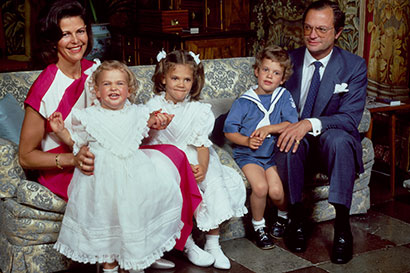
Queen Silvia, Princess Madeleine, Crown Princess Victoria, Prince Carl Philip and King Carl XVI Gustaf at Drottningholm Palace in 1984. Photo: Håkan Lind
